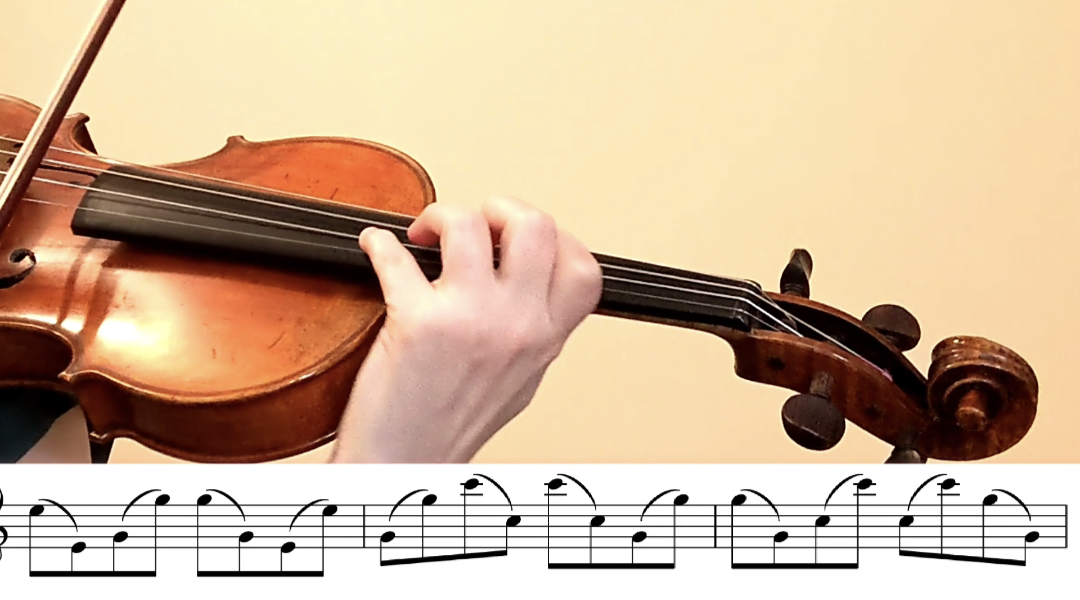
For the longest time, I’ve struggled to play double stops consistently in tune, and even more so with a decent sound. I always found playing octaves to be especially challenging – it’s a perfect interval and any deviation from matching pitches sticks out like a sore thumb…on in this case, a sore ear? After practicing octaves for years and years, they were just never consistent enough. I still struggle a little from time to time and need to practice octaves on a daily basis as part of my warmup routine to maintain a healthy hand frame and intonation.
Although my progress has been very slow, and often frustrating, all the repetitions really started to make their impact over a long-term time frame. Among all the great lessons I learned along the way about playing octaves better in tune and with a better tone, there are three that currently stand out for me, which I use as a guide for my most recent practice sessions. These concepts I learned from Nathan Cole through his online summer course Violympics, and also from the treatise on shifting by the great Russian pedagogue Yuri Yankelevich:
- Actively listen to the slide from one octave to the next. There is an “infinite” set of octaves that live in the path from one octave to another, assuming they’re all on the same pair of strings. When releasing finger pressure to perform the shift, do it very minimally – just enough to allow the fingers to slide. The goal is to still maintain a pure tone during the shift, so that we can hear a smooth glissando. Focus 80% on the journey, and the destination will take care of itself. When I learned how to do this correctly and started performing it regularly through muscle memory, it was a huge breakthrough for me!
- When switching from one pair of strings to another, use the middle string to pivot. For example, if playing octaves that switch from G & D strings to D & A strings, during the shift, the bow will be only on the D string. In this particular case, only one finger will perform the shift rather than both together.
- Pick the kind of exercises that develop simultaneously the arm movement along with the contraction or expansion between the 1st and 4th fingers. One way to do this effectively is pick a set of octaves that outline a large interval (ie – Perfect 4th or higher) along the same adjacent strings (ie – D and A). Then, after establishing the “interval border” practice all the octaves between the set chromatically. Another approach is to simply practice octaves in different parts of the fingerboard and shift at many different intervals. This allows the first finger to learn how much to adjust for each interval length.
I demonstrate the concepts above (and more) in this video full of exercises for different skill levels:
